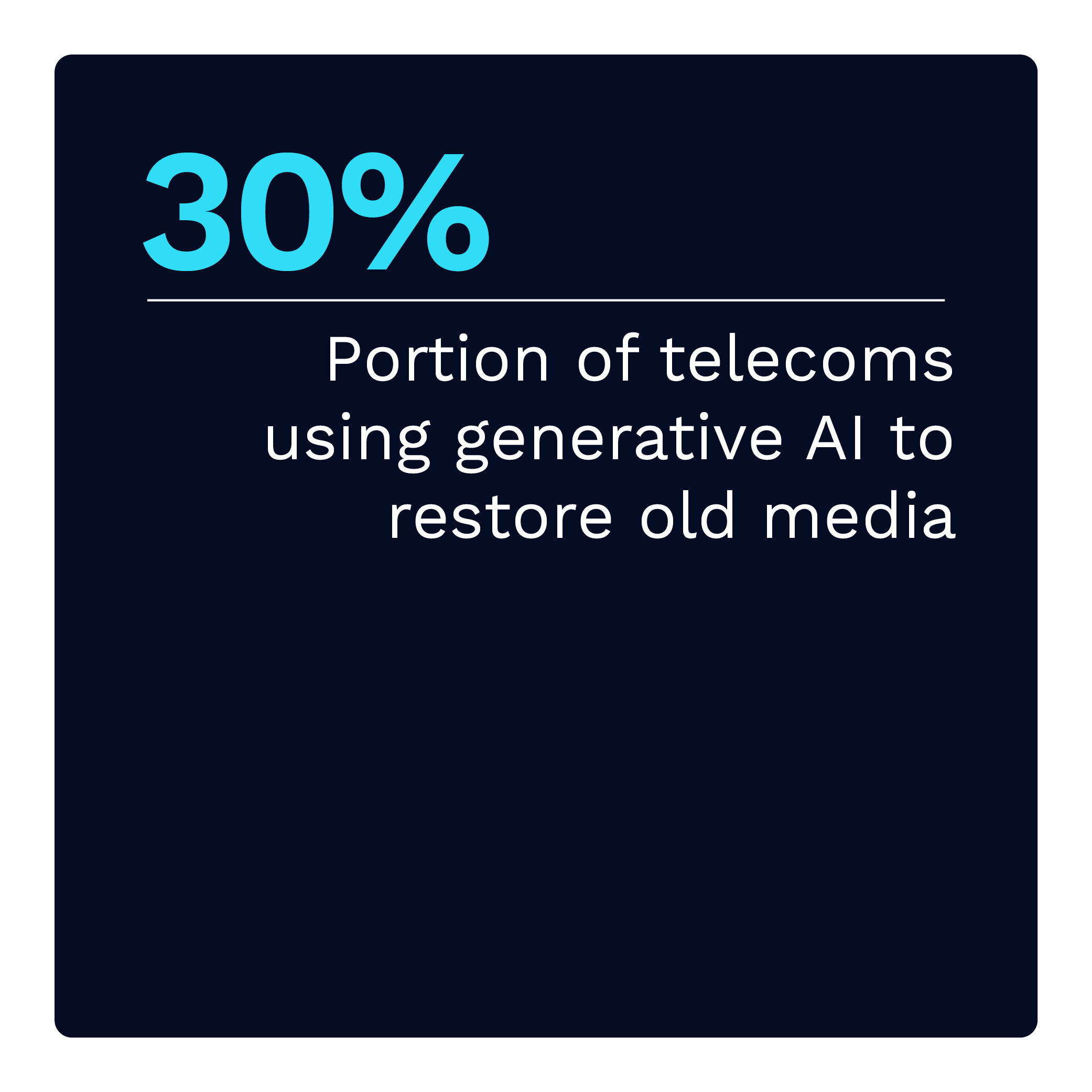Telecom Execs See Generative AI as Key to Customer Experience

![]()
Generative AI has proven valuable in transforming key operational facets at many telecommunications companies across a range of applications. These applications include enhancing connectivity and improving information security — elevating network performance and customer experience. This is reshaping the telecom workforce through controlled workloads and the development of proprietary AI tools for field technicians. However, despite the technology’s potential, its application poses a fundamental question to telecom operators: Does generative AI represent a source for cost savings or growth potential?![]()
For now, industry incumbents harness the technology primarily for its cost-saving capacity. Indeed, more than half of communication service providers (CSPs) are exploring or integrating generative AI for chatbots, virtual assistants and anomaly detection. In short, for automation. This approach prioritizes streamlining operations and empowering employees, initially aiming for cost reduction rather than direct revenue generation. With initial deployments of generative AI oriented toward efficiency gains, telecom operators may be missing more significant transformations.
The “Generative AI Tracker®” offers an in-depth look at how the technology is reshaping the telecom industry, setting new standards for customer engagement, service enhancement and operational excellence.
Innovative Uses for Generative AI in the Telecom Industry
The transformative changes generative AI brings to telecom operations are well underway. However, recent advancements build on earlier innovations such as broadband and 5G connectivity — basic but essential service provisions almost exclusively delivered by industry incumbents. AI-enabled telecom services, now increasingly prevalent across various markets, improve the customer experience by optimizing network performance while personalizing user interactions. As incumbent telecoms integrate generative AI into operations, they must meet growing consumer demand for seamless connectivity across various devices and environments.![]()
To learn more, visit the Tracker’s Innovation and Use Cases section.
Localization Could Drive Generative AI Implementation in Many Markets
Japanese telecom NTT’s introduction of generative AI platform tsuzumi marks an effort to improve services for corporate customers and remain competitive in the global market. Tsuzumi is notable for its advanced Japanese language processing, highlighting NTT’s commitment to localized, precise AI solutions. This move aligns with the broader trend of telecoms investing in generative AI to revolutionize customer engagement and service enhancement. Tsuzumi’s ability to interpret complex documents, including charts and diagrams, sets a new standard in AI utility for telecoms. This ability comes in response to the sector’s growing need for sophisticated data analysis and decision-making. This development demonstrates how telecom companies like NTT leverage generative AI to develop new offerings. The focus on improved language processing and data interpretation skills shows the industry’s evolution to meet diverse customer needs, moving beyond traditional connectivity services.
To learn more, visit the Tracker’s Issues and Challenges section.
Telecoms Aim to Differentiate Their Applications From Other Industries
Recognizing the importance of AI in advancing key national telecom priorities, industry representatives actively engage with policymakers to shape regulations. At a U.S. House of Representatives Communications and Technology subcommittee hearing in November 2023, industry leaders emphasized the low-risk, high-value nature of telecom AI technologies, generative or otherwise, which have minimal interaction with consumer data. This narrative aims to distinguish telecom AI use cases from high-risk applications targeted by U.S. Senate legislation. Industry groups such as the Information Technology Industry Council (ITI) and USTelecom advocate for a risk-based approach to AI governance. These groups stress the importance of concentrating on the technology’s application rather than its sector. Their stance reflects a broader industry concern that legislation constrains AI technology, impeding innovation and international competitiveness.
To learn more, visit the Tracker’s Policy and Regulation section.
About the Tracker
The “Generative AI Tracker®,” a collaboration with AI-ID, examines generative AI applications for the telecom industry and the potential benefits.
